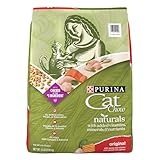If you think that any stray cat wandering your neighborhood is a European Shorthair, you are quite wrong. Also called as the Celtic shorthair, this breed has been developed by crossing the most beautiful looking house cats to create a robust cat with a rounded face. Let's have a look at some interesting facts about this cat breed.

Interesting Facts about the European Shorthair Cat
by Roohi
Are you thinking of buying a house cat? Why not get a European shorthair cat as your pet?
Origin and History
This cat breed basically originated in Sweden. Originally, these were bred by crossing the house cat, often with the Persian longhair cats, to get a unique appearance. Although these were bred in Northern Europe, Scandinavia, and Great Britain, the Scandinavian breeders insisted that their breed was not crossed with the Persian longhairs or any other breed. In fact, they used only domestic cats with certain characteristics to breed their shorthair cats.
It was soon quite evident in international cat shows that the cats bred by Scandinavian breeders were quite different from the shorthair cats of other European countries. To avoid confusion between these different breeds, the Scandinavian breeders registered their breed with FIFE and now only the Scandinavian breed is considered to be the European shorthair cat.
Healthy cat food recipes
Appearance
The European shorthair cat is muscular and medium in size. It has a broad, well-muscled chest with a rectangular body. The neck of this breed is medium and muscular and the legs are average in length with round paws. It has a fairly large head which appears to be round, however, it is longer than broader. Well-developed cheeks with a slightly rounded forehead and skull and a strong chin is one of the chief characteristics of this shorthair cat.
The eyes of the Celtic shorthair are medium in size, rounded, set slightly obliquely. The color of the eyes can vary from blue to green to yellow and they are clear and pure. It has ears that are medium in size and slightly rounded at the tips, which are set well apart.
These Scandinavian cats also have a tail that is thick at the base and tapers to a rounded point. The coat is short, dense, and soft and glossy. The cover hair is quite coarse which means that any wetness stays in the hair tips and can be easily shaken off.
These Celtic shorthair cats are found only in naturally occurring colors which include tabby patterns and tortoiseshell and solid colorations.
Bid on Ebay
Character and Temperament
Intelligent, active, independent, curious, and playful is how you can describe the temperament of these shorthair cats. They are quite sociable and friendly and like to be with people. You will find these cats greeting you at the door when you get back home and sleeping with you.
You will probably need to raise them with a group of cats if you want them to get along well with other pets. However, they generally get on well with other cats and can stay on with dogs also.
Now that you know all these interesting facts about the European shorthair cat, it is time to get one for your own house. These Celtic shorthair cats are expert in keeping houses and will also keep the mice away!
You might also like
Interesting Facts about Sable FerretsA sable ferret can be a lively addition to your family. Get some fun facts ab...
Interesting Facts about African Grey ParrotsAre you looking for information on African Grey behavior? Then you have come ...








 Tips to reduce computer eye strainon 03/23/2013
Tips to reduce computer eye strainon 03/23/2013
 Why Can't I Sleep at Night?on 03/14/2013
Why Can't I Sleep at Night?on 03/14/2013
 What is a Birthstone and what is my Birthstone?on 12/03/2012
What is a Birthstone and what is my Birthstone?on 12/03/2012
 Beautiful Flower Jewelryon 12/02/2012
Beautiful Flower Jewelryon 12/02/2012



Comments
Can anyone explain to me why my cat loves olives match more then any other food?
Yes, indeed. People do prefer cats with short hair. They are definitely easier to take care of. For cat lovers with allergies, these can be a wonderful choice. Thanks for stopping by!
Very interesting reading. I am surprised to find out shorthear cat comes from Scandinavia. At first I would expect there cats with longer hair because of weather condition. But again this is a domesticated animal, so cat with shorter hair is probably more popular in homes all over the world ... less cleaning, right?
Well, they do have shorthair. So, unlike the long-haired cats, they require less grooming and they have less dander also. Basically, less allergies than your usual long-haired ones. So, quite safe as pets!
These cats sound nice. How are they with people who have allergies?
Thanks, Brenda!
Very interesting article. Cat lovers will love it.
Glad that you liked it. Thanks for stopping by!
Very different from our Domestic Shorthair here in the US.